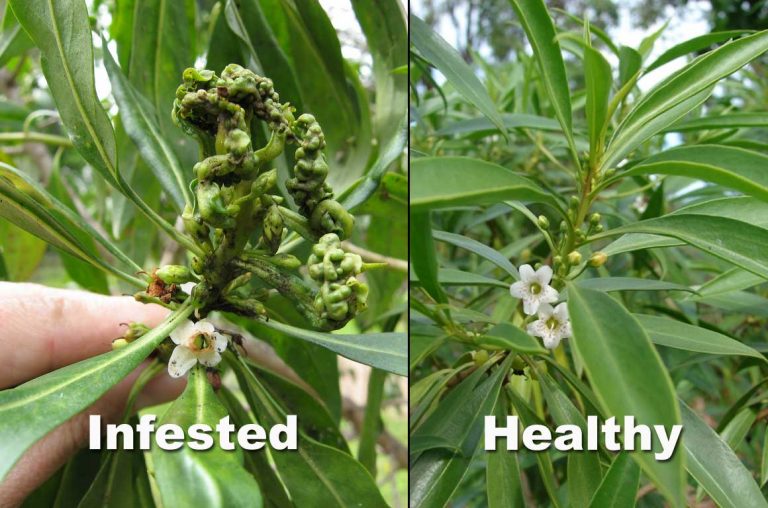8/29/25 – INVASIVE INSECT TARGETING NAIO PLANTS DETECTED ON KAUAʻI
Posted on Aug 29, 2025 in Forestry & Wildlife, Main, News Releases, slider| JOSH GREEN, M.D. GOVERNOR |
DAWN CHANG
CHAIRPERSON |
INVASIVE INSECT TARGETING NAIO PLANTS DETECTED ON KAUAʻI
Seeking help from residents as multi-agency response launches
LĪHUʻE, Kauaʻi – Myoporum thrips, invasive insects that attacks native naio plants (Myoporum spp.), have been detected for the first time on the island of Kauaʻi. The new detection is the result of a report submitted by a member of the public via the 643pest.org website earlier this month. This situation is being cooperatively managed by the Department of Land and Natural Resources Division of Forestry and Wildlife (DOFAW), the Kauaʻi Invasive Species Committee (KISC) and the Hawaiʻi Department of Agriculture and Biosecurity (HDAB).
Upon receipt of the report, HDAB and KISC conducted island-wide surveys on cultivated naio plants, discovering two additional infestation locations. DOFAW is currently surveying wild naio populations across the island.
“An early detection and response plan was developed for Kauaʻi in 2013 by KISC, DOFAW, and HDAB. Having that plan in place helped the agencies respond quickly in this case, and partners are hopeful that the rapid response may lead to successful containment or even island-wide eradication,” said Rob Hauff, forest health coordinator with DOFAW. “Help from Kauaʻi residents will be critical to ensuring the full infestation is discovered and treated.”
“Myoporum thrips feed on Myoporum leaf tissue and cause leaf curl, scarring, deformation or abnormal growths that damage the naio and can potentially lead to its death.” Hauff added. “Naio plants with this kind of damage should be checked closely for small black insects. Reports of any such damage or sign of thrips should be made immediately to 643pest.org.”
Naio, which grows as a tree or shrub, depending on the climate, is an important component of lowland and coastal dry forest ecosystems. Naio acts as host to several species of endemic insects and pollinators.
Myoporum thrips were first discovered in the state in 2009, on Hawaiʻi Island, where they are now widespread. The invasive insect was identified on Oʻahu in 2018 and confirmed on Moloka’i in 2024. Pathways to potential introduction for the destructive pest are many and include the shipping of plants, equipment, parts of naio and thrips hitching a ride on humans.
# # #
RESOURCES
(All images/video courtesy: DLNR)
Photographs – Naio thrips found on Kauaʻi (Aug. 2025):
Webpages:
- Report invasive species to: 643pest.org
- Myoporum thrips information: https://dlnr.hawaii.gov/hisc/info/invasive-species-profiles/naio-thrips/
Media Contact:
Ryan Aguilar
Communications Specialist
Hawai‘i Dept. of Land and Natural Resources
Phone: 808-587-0396
Email: [email protected]
